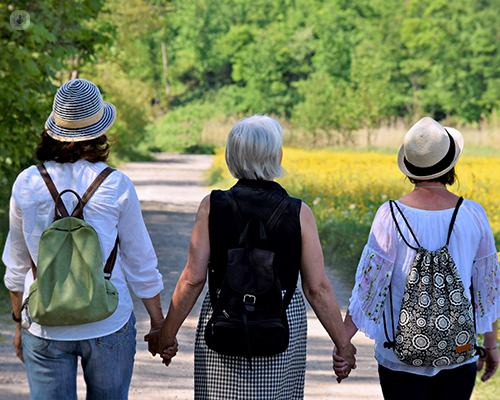Menopause and the bladder: What is the link?
Autore:Physical changes in a woman’s body often accompany the onset of menopause, as hormone levels shift and have an effect on tissues and organs. Among the most commonly affected organs is the bladder.
Mr Gidon Lieberman, leading consultant gynaecologist and fertility specialist, offers an expert insight into the effect of menopause on the bladder, including what bladder problems women may experience and how these problems can be managed.

How can menopause affect the bladder?
Like with any other, if not all, parts of a woman’s body, the bladder is impacted by menopause. These problems with the bladder may show as: the need to pass urine more often (called frequency); the inability to hold urine as well as before menopause (called incontinence) or the development of more urinary tract infections.
Commonly, the vagina may also become drier and itchier.
What causes these changes?
During menopause, oestrogen levels fall. When this happens, the lack of oestrogen causes the tissues of the vagina, the vulva and the urethra (which carries urine out of the body) to thin or waste away, in a process called urogenital atrophy. This process reduces the organ’s abilities to function in the same way that they did before menopause.
The tissues of the vagina, vulva and urethra are affected because they all have oestrogen receptors. However, besides urogenital atrophy, lower oestrogen levels can also change the pH of the vulva and the vagina, making them more susceptible to thrush and other gynaecological and sexual infections.
What type of symptoms might women experience?
Urinary tract atrophy can lead to various symptoms, which are all associated with incontinence.
These symptoms may include the unexpected urge to pass urine that cannot be delayed, known as urge incontinence. This can present as wet (there are urine leaks before the toilet is reached) or as dry and rushed (urine is held but there is a hurry to get to the toilet).
Another common symptom is stress incontinence, which is characterised by urine leaks when there is an enhanced pressure on the bladder, for example after coughing, jumping or sneezing.
In some cases, women may simply notice that they have a growing need to pass urine more often, both during the day and at night.
In addition to urinary tract atrophy, menopausal urinary symptoms may also be caused by pelvic organ prolapse. This occurs when one or more of the pelvic organs (the bladder, the bowel or the uterus) descend from their usual positions down into the vagina. The risk of experiencing pelvic organ prolapse rises with menopausal urogenital atrophy.
How can these symptoms be managed?
Managing bladder symptoms during menopause can be frustrating for many women, but there are numerous treatment options that can help. These consist of:
- Lifestyle changes
Obesity and a higher BMI heightens the pressure placed on the bladder. This pressure then aggravates symptoms of bladder problems, particularly those caused by pelvic organ prolapse. Keeping a healthy weight can alleviate symptoms of bladder problems.
Additionally, women with bladder problems are also recommended to drink plenty of water and to stay away from known triggers of overactive bladder symptoms, such as caffeine, alcohol and fizzy drinks. Reducing the number of beverages that are drunk in the evening can especially help women who suffer from passing urine multiple times during the night.
- Bladder retraining and pelvic floor exercises
Bladder retraining can increase the time passed in between urinations. Pelvic floor exercises, on the other hand, build up strength in the pelvic floor (the group of muscles supporting the urethra and the bladder) that is weakened by menopause.
- Double voiding
Consisting of passing urine again straight after going to the toilet, double voiding is a simple way to ensure that all the urine has passed properly, which can in turn, prevent infections in the urinary tract.
Although double voiding is a preventive measure, women with symptoms of urinary tract infections should always seek medical attention to receive suitable treatment.
- Medication
If self-management methods do not work, medications like hormone replacement therapy may be considered to raise oestrogen levels and improve problems with the bladder.
A common prescription is topical vaginal oestrogen which, administered in the form of tablets, creams or rings, can be used alone or in combination with HRT to specifically address bladder symptoms.
If you are experiencing bladder problems due to menopause and wish to seek expert treatment for them, don’t hesitate to visit Mr Lieberman’s Top Doctors profile today.


